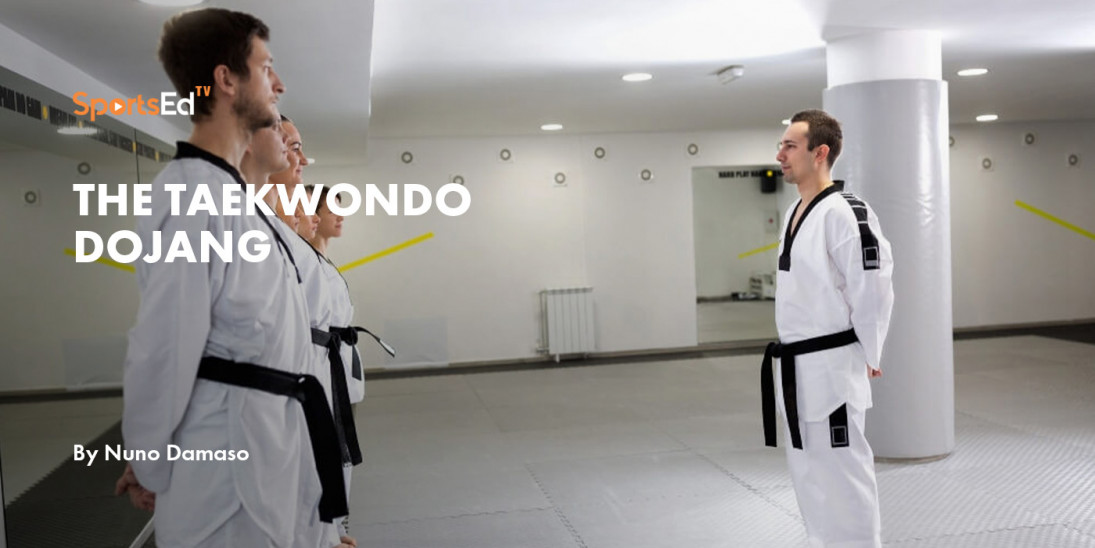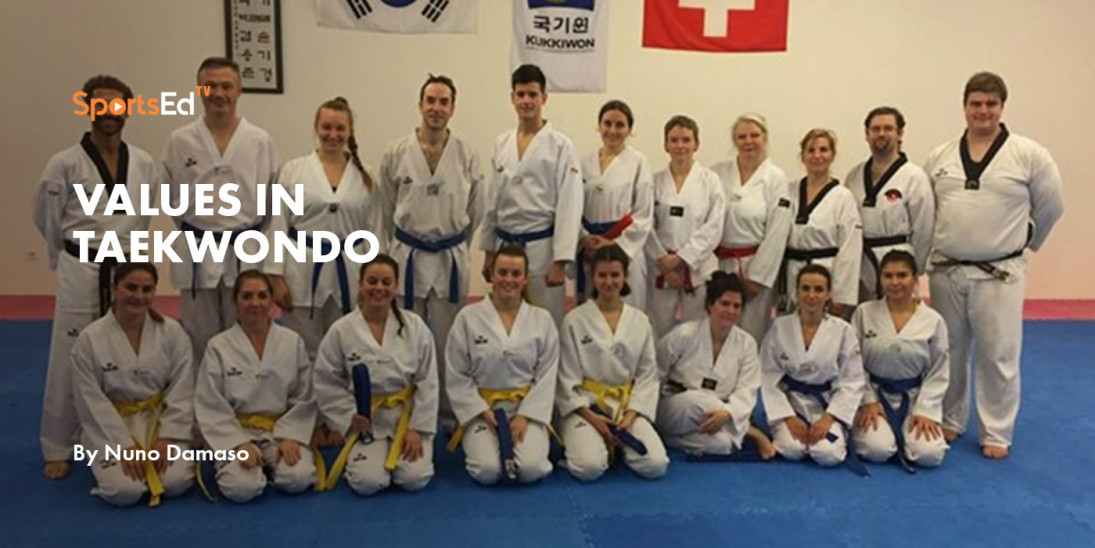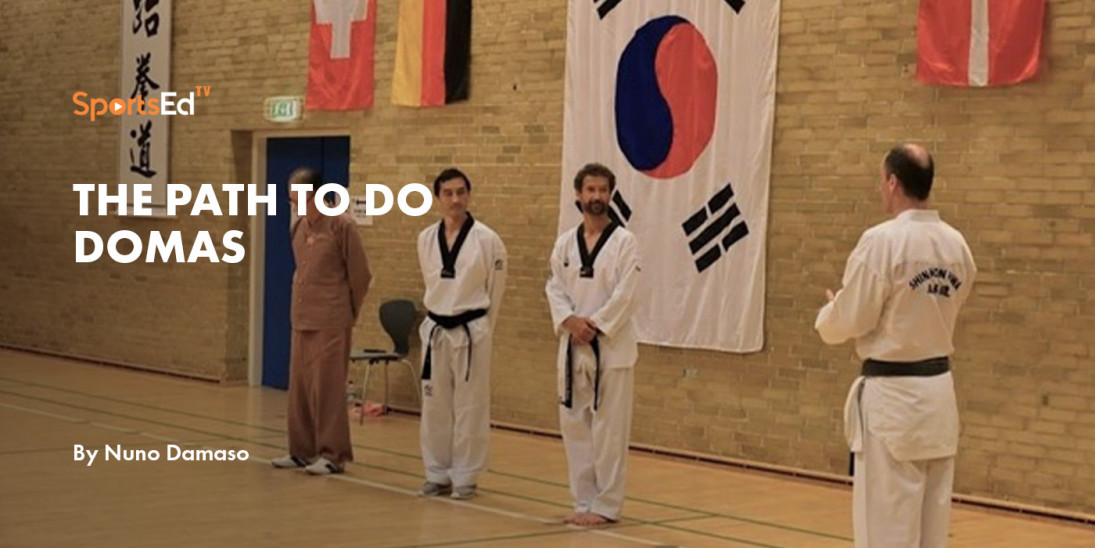Taekwondo
Welcome and thanks for visiting...

The Taekwondo Dojang

The Dojang
The dojang means the place where the DO or the WAY is practiced.
The emphasis is therefore placed on the physical as well as on the spiritual aspect. This difference is significant. It is therefore not a training room in the usual sense of the word. But it is much more than a place where physical and mental practice become one.
But what is meant by DO? It is a path of spiritual development that forges character and practices it in all aspects of one's personality.
It must be said that martial arts, after having been war arts, have been transformed over time and have also become pedagogical tools for personal development.
This aspect may seem paradoxical at first glance...how can fighting methods be used in personality development?
It is necessary to understand that in its essence martial arts had a dramatic character since it was neither more nor less than life or death!
This awareness of danger, fear, pain and our impermanence has naturally led practitioners of the past to ask questions of a spiritual nature.
Taoism, Confucianism and Buddhism have been spiritual supports in the ancestral practice of martial arts. We find there the source of certain rituals practiced until today in dojangs all over the world.
It would therefore be extremely simplistic and a shame to equate a dojang with a simple fitness center or physical education gym. The dojang is a place with a spiritual character allowing to create an atmosphere favorable to the development of the practitioners as well physically as morally.
The dojang is therefore a place where Taekwondo and its fighting techniques are taught, but also a place where values are transmitted through well-defined rituals and methods.
The Dojang: Rules and Rituals

Salvation
Practitioners are required to salute the hall, the Korean and national flags, the teacher and the black belt students.
The salute to the hall is not always obvious to us Westerners and can be misinterpreted. Greeting in the traditional way is a sign of respect and humility. We prepare ourselves mentally for the practice. We empty ourselves and open ourselves inside for learning. This ritual is also about getting into the here and now and leaving the problems and worries of everyday life behind.
The salute to the flag probably comes to us from Confucianism is clearly a symbol of patriotism.
Salute to the master is also a proof of respect, politeness and humility. The exchange between the teacher and the student requires a lot of trust and respect. In martial arts, the teacher is both educator and pedagogue. He sometimes has the character of a spiritual guide or mentor.
The black belt salute is part of the martial arts hierarchy. Here too, it is not a question of seeing this gesture as subjugation. The upper belts are examples and are also responsible for the progression of beginner students. Black belts are on the one hand respected and on the other hand have duties towards the lower ranks.
The dojang is a micro cosmos and as in a family, each member bears a share of responsibility in the smooth running of the school.
The deeper meaning of salvation is to remind the follower that his ego must remain in the checkroom. Humility is one of the main conditions for a good understanding and learning of martial arts. Vanity and arrogance have no place in a real dojang.
The quality of a good martial arts school is recognized by the kindness, politeness and respect of its members. It is the best business card.
Silence
Martial arts aim at a perfect symbiosis between body and mind. They require total concentration during each session. Contrary to classical sports disciplines, practitioners are not allowed to make mistakes. In case of confrontation, error is synonymous with serious injury. This is why discipline and absolute concentration are so important in the practice of martial arts which are not a game.
The search for perfection is also an avowed goal of martial arts. It is one of the reasons why we talk about art. The permanent repetition of techniques and rigor also has the goal of "polishing" the mind.
Indeed a perfect, economical, fluid technique always comes from a state of total concentration. Of stripping. The practitioner is completely present in the moment and is one with the practice.
Rituals in dojang and silence in particular play a crucial role in this process. The atmosphere of the dojang is meant to be conducive to total concentration and clarity of mind. Although we always talk about technique, here too we touch a spiritual aspect in the connection between body and mind.
Order and Cleanliness
These two aspects go hand in hand with the respect given to this place. As well as silence, order and cleanliness are parameters that will facilitate the practice and give a framework to the practitioner.
At the symbolic level, as for body and mind which are inseparable, there is no inside or outside. Discipline and concentration are a way to put our mind and thoughts in order. The same goes for the place where we practice.
The Dobok
We find again the suffix DO in the word dobok. The dobok is therefore the uniform in which the art of Taekwondo is practiced.
The dobok is white and represents purity. The dobok must always be clean and ironed. The purpose of these rituals is to remind the practitioner of his quest for spiritual growth through the practice of Taekwondo.
The symbolism of the white dobok is also to avoid any racial, ethnic or social discrimination. All practitioners are equal.
Taekwondo has not been spared by the commercialization and over-consumption society. Taekwondo outfits have become more and more trendy. These trendy doboks do not correspond to the ideal research and it is distressing to see Olympic athletes fighting in multicolored doboks. This search for recognition and visibility at the marketing level is not in line with the traditional values of Taekwondo.
Sabonim / The Master
As explained above the Taekwondo teacher wears several caps. As well as being a sports or technical teacher, he is also a spiritual guide or mentor. This responsibility can be very heavy and difficult to bear. He is a kind of guardian of the temple.
He is responsible for the transmission of technical knowledge but also for moral values. It is he who ensures that the framework, in this case the dojang, can be a place conducive to practice in all its aspects. He will therefore have to create a culture based on respect, politeness, humility but also rigor and discipline.
As we know, much of education takes place through example and not words. In the same way, the Taekwondo master must be an example as well, technically as well as morally. It is constantly observed students have a natural tendency to admire and be like the teacher.
Read more:





